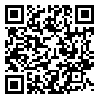Mon, Dec 15, 2025
Volume 9, Issue 35 (Summer 2011)
ASJ 2011, 9(35): 96-110 |
Back to browse issues page
Download citation:
BibTeX | RIS | EndNote | Medlars | ProCite | Reference Manager | RefWorks
Send citation to:



BibTeX | RIS | EndNote | Medlars | ProCite | Reference Manager | RefWorks
Send citation to:
Alidoust M, Bayat M, Norozian M, Fadaei F, Sharifian Z, Rezaei F. Effect of Low- Level He-Ne Laser Irradiation on Healing of Surgically Transected of Achilles Tendon in Streptozotocin-Induced Diabetic Rats by a Biomechanical Evaluating Method. ASJ 2011; 9 (35) :96-110
URL: http://anatomyjournal.ir/article-1-529-en.html
URL: http://anatomyjournal.ir/article-1-529-en.html
Morteza Alidoust 
 , Mohammad Bayat1
, Mohammad Bayat1 
 , Mohsen Norozian
, Mohsen Norozian 
 , Fatemeh Fadaei
, Fatemeh Fadaei 
 , Zeinalabedin Sharifian
, Zeinalabedin Sharifian 
 , Fatemeh Rezaei
, Fatemeh Rezaei 


 , Mohammad Bayat1
, Mohammad Bayat1 
 , Mohsen Norozian
, Mohsen Norozian 
 , Fatemeh Fadaei
, Fatemeh Fadaei 
 , Zeinalabedin Sharifian
, Zeinalabedin Sharifian 
 , Fatemeh Rezaei
, Fatemeh Rezaei 

Abstract: (2095 Views)
Purpose: The aim of the present study was to evaluate the effect of low-level He-Ne laser irradiation on Achilles tendon healing in streptozotocin (STZ) induced diabetic rats by a biomechanical evaluating method.Materials and Methods: 33 male adult rats were used for tensiometerical examination. Rats were divided into healthy and diabetic groups. Diabetes was induced by STZ injection. Right Achilles tendons of all rats were completely transected one month after STZ injection. For tensiometerical examination 18 healthy rats and 15 diabetic rats divided into two experimental groups and one control group. Two experimental groups of healthy rats were irradiated by a 7.2 mW Helium-Neon laser with 2.9 and 11.5 J/cm2 energy densities for 10 days. Two groups of diabetic rats were irradiated by the He-Ne laser with 2.9 and 4.3 J/cm2 energy densities for 10 days. The animals of both healthy and diabetic control groups were not submitted to laser irradiation. Distal portion of the muscular part of triceps surae muscle, Achilles tendon and calcaneus were surgically extracted from rats after killing them by chloroform. Final weight and blood glucose of the rats were recorded. Data were analyzed by student t test. Results: 9 rats died during study. Maximum stress (N/mm2) of healthy experimental groups with 2.9 J/cm2 and 11.5 J/cm2 were 4.7±1.1 and 6.1±5.2 respectively and control group was 2.4±1.6. P values were 0.018 and 0.137 respectively. Maximum stress (N/mm2) of diabetic experimental groups with 2.9 J/cm2 and 4.3 J/cm2 were 2.7±0.5 and 2.1±0.8 respectively and control group was 1.3±0.9. P values were 0.019 and 0.23 respectively. Conclusion: Low-level laser irradiation with 2.9 J/cm2 energy density on transected Achilles tendon of healthy and diabetic rats significantly accelerated strength and maximum stress of repairing tendon which was defined with tensiometrical examination.
Keywords: Low-Level Laser Therapy, Achilles Tendon, Type 1 Diabetes, Tendon Healing Process, Tensiometery
Type of Study: Original |
Subject:
Morphometry
Received: 2021/12/30 | Accepted: 2011/08/28 | Published: 2011/08/28
Received: 2021/12/30 | Accepted: 2011/08/28 | Published: 2011/08/28
| Rights and permissions | |
 |
This work is licensed under a Creative Commons Attribution-NonCommercial 4.0 International License. |

